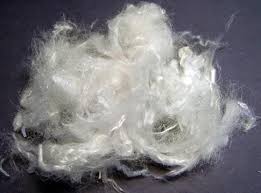Electric and Autonomous Shift in the Automotive Industry is Driving Opportunities for Global Automotive Ceramics Market
In the transportation sector ceramics are overtaking conventional automotive manufacturing materials such as metals & plastics owing to its lucrative peculiarities. Automotive ceramics are lightweight, can endure extreme thermal conditions enhancing engine efficiency, and are capable of insulating thermally and electrically. These lucrative peculiarities of ceramics has landed it at the foremost spot of materials employed for manufacturing of electric vehicles. As the market for EVs is gaining significant pace globally, it is a major factor driving the automotive ceramic market demand. By material type the market majorly is bifurcated into titanate oxide ceramics, alumina oxide ceramics, and zirconia oxide ceramics.
Advanced autotomize ceramic material is also efficient in wear and corrosion resistance and is also comprised of catalytic converters which reduce emission of nitrogen oxides, carbon monoxide, and unreacted hydrocarbons. Consequently, it has have found immense scope of applications as these materials are employed in the manufacturing of internal combustion engine (ICE) automobile’s components. Prime examples of such apparatuses include spark plug insulators, catalytic convertors, and various automotive sensors. The most frequently use automotive ceramic is alumina ceramic which is bound by ceramic sealant.
The demand for nano ceramic coating is also escalating as the trend of autonomous luxury vehicle is setting in the developed regions of North America, Europe and Americas. The integration of technology such as IoT has augmented the uptake of automotive electronics which is further adding impetus to the uptake of automotive ceramics. Multilayer ceramic substrate are employed for manufacturing a gamut of automotive electronic products such as ECUs, LED packages, and sensor packages.
The global automotive ceramics market size was evaluated to be $1.75 billion in 2018. And, with the trend of electric vehicles and autonoumus vehicles settling in and moving towards commoditization, demand in the market is estimated to be progressing at a global CAGR of 5.1% during the forecast period of 2019 - 2025. Apart from automotive electronics, the market is witnessing impetus from the increasing demand of automotive sensors as well. Autonomous features such as blind spot monitor, advanced driver-assistance systems and lane departure warning system have emerged as common practices employed in vehicles. Hence, the demand ceramic sensor components including oxygen sensor, pressure sensor, proximity sensors, and capacitive sensors is impacting the automotive ceramic market size.
APAC leads the global automotive ceramic market demand as India and China pace up their ‘electric mobility’:
APAC is reckoned to be the leading region globally in terms of automotive ceramic market demand, as the region in 2018 generated 40% of the global demand share. This lucrative trade in APAC is attributable to the strong presence of globally leading automotive manufacturers in India, China, and Japan.
Some facts supporting the argument-
The trend of electric vehicles in the automotive sector in APAC is adding impetus to its automotive ceramics market. In 2018, the global electric car fleet exceeded 5.1 million units with China alone witnessing sales of nearly 1.1 million units. And it also led the global electric car stock with 2.3 million (approximately 50%) units. By 2030, China and Japan is estimated to secure 1st and 3rd position in global EV market. Not just EVs, even the contemporary ICE engine vehicles manufacturers are implementing ‘light weight design’ to enhance fuel efficiency of vehicles. The overall automotive market in APAC is flourishing as well with growth rate in India (+7.98%), Indonesia (+10.31%), and Malaysia (+12.18%).
After an acute analysis of the application segment of automotive ceramics market the major verticals are categorized into automotive exhaust systems, automotive engine parts, and automotive electronics. Further analysis estimates the automotive engine parts to be fastest growing application segment, progressing with an application CAGR of 4.8% during the forecast period of 2019 – 2025. The lead of this segment is attributed to the cumulative application of advanced automotive ceramics in glow plugs, high-pressure pumps, valves, spark plugs, electronic fuel pumps, and sealing & insulation rings.
Automotive Ceramics Market Companies:
The companies with majority of the automotive ceramics market share are Kyocera Corporation, CeramTec, NGK Ceramics USA Inc., NGK Spark Plug's Group, CoorsTek, Inc., Morgan Advanced Materials, Saint-Gobain Ceramics & Plastics, Inc., Ibiden Co., Ltd., Ceradyne Incorporated, and Corning Incorporated.
Talk to one of our sales representative about the full report by providing your details in the link below:
https://www.industryarc.com/support.php?id=500287
Related Reports:
- A. Technical Ceramics Market
https://www.industryarc.com/Research/Technical-Ceramics-Market-Research-500251
- Electronics Ceramics & Electrical Ceramics Market
https://www.industryarc.com/Report/16460/electronics-ceramics-electrical-ceramics-market.html
Any other custom requirements can be discussed with our team, drop an e-mail to sales@industryarc.com to discuss more about our consulting services.
To request for a quote, provide your details in the below link:
https://www.industryarc.com/reports/request-quote?id=500287
Media Contact:
Mr. Venkat Reddy
Sales Manager
Email : sales@industryarc.com
Contact Sales: +1-614-588-8538 (Ext-101)
About IndustryARC: IndustryARC is a Research and Consulting Firm that publishes more than 500 reports annually, in various industries such as Agriculture, Automotive, Automation & Instrumentation, Chemicals and Materials, Energy and Power, Electronics, Food and Beverages, Information Technology, and Life sciences and Healthcare.

Retro-Reflective Material Market projected to grow at a CAGR of 15.5% during the forecast period
Traffic signals and road sign technologies have changed dramatically in the last few years since the inception of retro-reflective materials and its implementation by a majority of the traffic authorities and government bodies. This retro reflective sign reflects a significant portion of a light beam to its source. With this cataphote, the illuminance attained is far better than the scattered reflections. This retro-reflectors are used in the construction, mining, infrastructure, textile, and automobile industries. Such varied application augments the demands in the global retro-reflective material market size which already generated $5.12 billion in 2018. Foreseeing the increased applications in the construction and automobile sector, the opportunities in the market are projected to grow at a CAGR of 15.5% during the forecast periods 2019 to 2025.
Geographic and Application Analysis
Construction Industry Driving Demands in the APAC Region: The Asia-Pacific region was observed as the most lucrative region in the retro-reflective materials market, the region was accounted for 39% of the total marketplace. The APAC region resonates with such a heavy market share owing to the massive construction activities prevalent in the region. At the construction site, these reflectors are used in signboards, apparels for personnel, and vehicles used in the construction site. The global construction market is expected to reach $8 trillion by the year 2030, mainly driven by China, India, and the United States. China and India are projected to be one of the biggest contributors to this augmented demands in the construction industry. Thus, the growing demand in the construction industry in APAC will continue to harness demand for retro-reflective materials such as reflective radium tapes and reflective labels.
Automotive: Major Growth Driver in the Retro-Reflective Material Market: Other than the construction industry, the traffic flow, and work zone applications of the retro-reflector material are screened as the key application of the market. The traffic flow and work zone application are anticipated to propel at a double-digit CAGR of 16.5% during the forecast period. These retro-reflectors are fitted on the roads that guide the vehicles and informs the driver about directions on the road. These reflectors are in demand owing to the stringent traffic rules amended by the government regarding road safety. The increasing use of the product on highway vehicle control is creating considerate opportunities in the retro-reflective market. Additionally, the vigorously amplifying demand in the automotive industry, mainly the rising production of the light and heavy commercial vehicles across the globe is burgeoning the demand influx in the retro-reflective materials market.
Retro-Reflective Materials Market Competitive Landscape
The companies influencing the retro-reflective material market are 3M Company, Avery Dennison Corporation, ORAFOL GmBH, Dominic Optical, Changzhou Hua R Sheng Reflective Material Co. Ltd., Coats Group plc, Nippon Carbide Industries Co. Inc., Paiho Group, Asian Paints PPG Pvt. Ltd., and Reflomax.
Talk to one of our sales representative about the full report by providing your details in the link below:
https://www.industryarc.com/support.php?id=500284
Related Reports:
- a) Photoelectric Sensors Market
https://www.industryarc.com/Report/15352/photoelectric-sensors-market.html
Any other custom requirements can be discussed with our team, drop an e-mail to sales@industryarc.com to discuss more about our consulting services.
To request for a quote, provide your details in the below link:
https://www.industryarc.com/reports/request-quote?id=500284
Media Contact:
Mr. Venkat Reddy
Sales Manager
Email: sales@industryarc.com
Contact Sales: +1-614-588-8538 (Ext-101)
About IndustryARC: IndustryARC is a Research and Consulting Firm that publishes more than 500 reports annually, in various industries such as Agriculture, Automotive, Automation & Instrumentation, Chemicals and Materials, Energy and Power, Electronics, Food and Beverages, Information Technology, and Life sciences and Healthcare.

Metal Biocides Market Revenue Growth Induced by Industrial Reliance on Sustainable Biocidal Alternatives
A Sustainable Alternative To The Toxic Biocides: North America Leading The Metal Biocide Race
The metal biocides market offers a sustainable solution to the unspecific toxic actions of the chemical alternatives. Metal biocides, generally recommended as mold fogger or for mold remediation, horticulture biocidal wash, and protection of metalworking fluids from bacteria and fungi, offer a harmonized risk factor upon its application in several industries and have grabbed a lot of customer attention in the past few years. With natural antibacterial, antibiotic, and other properties metal biocidal wash has a significant role in multifarious industries such as paints and coatings, medical, textile, pesticides, and others. Besides, incentives from the government and non-government organizations have boosted the metal biocides innovation in recent years. Additionally, North America is emerging as a leading region in this market. It contributed a major regional share of 31.5% to the global metal biocides market in the year 2018. This is mainly facilitated by the huge application of silver biocides-based technology adopted by American industries. Furthermore, there are around 6,210 hospitals in the United States. This brings to the fore a huge requirement of metal biocides in sterilization methods and disinfection processes, whereby uplifting the domestic market demand.
Demand Growth Of The Metal Biocides And Newer Approaches By Organizations:
The metal biocides market is leveraging huge economic output owing to multiple factors that are increasing consumer demand across the world. With wide application in the medical industry to tackle disease-causing microbes and treating wastewater creates a scope for the metal biocides market growth. Globally, over 2 million tons of sewage and other wastes are released into the water sources which simultaneously signifies huge prospects for the metal biocides market. Besides, highly effective and naturally available metal-based biocides such as copper, silver, and zinc are cultivating a stir among the industries. Significantly, the global metal biocides market size reached $3.2 billion as of 2018 and will continue to expand owing to the constantly increasing threat posed by sewage affected water bodies. Also, one of the market analysts at IndustryARC highlights that the metal biocides market will grow at a 4.5% CAGR during the forecast period of 2019-2025.
Among other industrial sectors, metal biocides gained a prominent place in medical usage induced by the high-risk environment caused by the constant interaction with diseased patients. Particularly, silver biocides are widely used in the medical environment for disinfection, equipment antisepsis, and sterilization of devices. Hence, the application of metal biocides by the medical industry is anticipated to increase at a CAGR of 5.1% through to 2025. Silver being the most ideal and abundant metal on earth surface with antimicrobial properties is readily gaining application as an effective metal biocide by other end-users. Recently, NASA is considering the silver biocide to be used in spacecraft water disinfection. Concurrently, this approach by the several industries and organizations towards safe usage of metal biocides will generate huge growth prospects during the forecast period.
Major Players In The Metal Biocides Market:
The metal biocides market pioneers include BASF SE, Clariant AG, The Dow Chemical Company, Sanitized AG, Lonza Group Ltd., Troy Corporation, Milliken Chemical Company, SteriTouch Ltd., Noble Biomaterials, Inc., Renaissance Chemicals Ltd., and others.
Talk to one of our sales representatives about the full report by providing your details in the link below:
https://www.industryarc.com/support.php?id=500275
Related Reports:
- Biocides Market
https://www.industryarc.com/Report/11647/biocides-market.html
- Wood Coatings Biocide Market
https://www.industryarc.com/Report/18610/wood-coatings-biocide-market.html
Any other custom requirements can be discussed with our team, drop an e-mail to sales@industryarc.com to discuss more about our consulting services.
To request for a proposal, provide your details in the below link:
https://www.industryarc.com/reports/request-quote?id=500275
Media Contact:
Mr. Venkat Reddy
Sales Manager
Email: sales@industryarc.com
Contact Sales: +1-614-588-8538 (Ext-101)
About IndustryARC: IndustryARC is a Research and Consulting Firm that publishes more than 500 reports annually, in various industries such as Agriculture, Automotive, Automation & Instrumentation, Chemicals and Materials, Energy and Power, Electronics, Food and Beverages, Information Technology, and Life sciences and Healthcare.
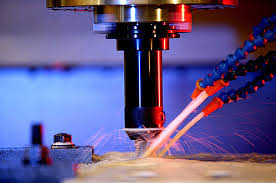
Medical Grade Silicone Market Withstands Competitiveness with the Adoption of Technological Innovations in the Healthcare Sector
Increasing incidences of trauma associated with skeletal injuries are increasing the growth of the medical grade silicone market in the upcoming years. Road accidents cause around 20 and 50 million injuries annually across the globe. Road traffic injuries are the leading cause of death among people aged between 5 and 29 years, and over 1.35 million people die each year as a result of road traffic crashes. On the other hand, technological advancements in robotic surgery is a key factor that will drive the growth of the medical grade silicone market in the upcoming years. Robotic surgery will be universally affordable in the near future and enhance the outcome of complex surgeries.
The global medical grade silicone market size attained a value of $1.3 billion in 2018. Furthermore, the market is thriving with huge opportunities in partnerships with global and local players along with product expansions and is growing at a CAGR of 5.9% throughout the forecast period 2019-2025.
The Proliferation of Medical Grade Silicone Implants in the Healthcare Industry
Implants are artificial medical devices that are used to replace damaged organs and tissues. Medical implants aid in monitoring body functions, delivering medication and providing support to biological parts. These implants are used in a diverse range of applications in the medical sector, such as dental, breast, and orthopedic implants. Besides, an increase in the occurrence of chronic diseases such as osteoarthritis, neuropathic, and cardiovascular diseases worldwide is another factor impelling the demand for medical grade silicone.
Increasing prevalence of cardiovascular diseases in North America is expected to bolster the market growth
North America generated 38% of the global medical grade silicone market revenue in 2018. The growing aging population in this region resulted in an increase in demand for new technologies such as implants, limbs and medical devices, which in turn, trigger the growth of the medical grade silicone market. Along with that, an increase in the incidence of cardiovascular diseases in North America is the primary factor influencing the growth of this market. More than 130 million adults are estimated to have some form of cardiovascular disease by 2035 in the U.S. These increasing numbers are anticipated to amplify the North America medical grade silicone market.
Technological Advancements in Prosthetics & Orthopedics Segment Increase the demand for Medical Grade Silicone Market
The application segment that will be creating the most lucrative opportunities for the medical grade silicone market is prosthetics and orthopedics. This application segment is projected to grow at a CAGR of 5.3% through to 2025. Chemical inertness, durability, and biocompatibility properties of silicone have made it an eminent material used as a liner for artificial limbs. Liquid silicone rubber is a high consistency rubber that is used as an adhesive. Non implantable materials are available in various durometers. An estimated 8.9 million fractures are caused annually by osteoporosis worldwide. A high rate of occurrence of osteoporosis is estimated to impel the growth of the medical grade silicone market. Thus, technological advancements in the healthcare sector mainly in prosthetics combined with a high rate of orthopedic cases lead to the growth of the medical grade silicone market.
The Major Players in the Medical Grade Silicone Market:
Prominent players in the medical grade silicone market include Albright Technologies, Bluestar Silicones, Dow Corning, Ltd., Elkem Silicone, FMI LLC, Momentive, 3M Company, Nusil Technology LLC, Primasil Silicones Limited, Shin-Etsu Chemical Co., and Wacker Chemie AG.
Talk to one of our sales representative about the full report by providing your details in the link below:
https://www.industryarc.com/support.php?id=500166
Related Reports:
A. Silicone Market
https://www.industryarc.com/Report/15265/silicone-market.html
B. Implants & Prosthetics Market
https://www.industryarc.com/Report/10635/dental-implants-prosthetics-market.html
Any other custom requirements can be discussed with our team, drop an e-mail to sales@industryarc.com to discuss more about our consulting services.
To request for a quote, provide your details in the below link:
https://www.industryarc.com/reports/request-quote?id=500166
Media Contact:
Mr. Venkat Reddy
Sales Manager
Email: sales@industryarc.com
Contact Sales: +1-614-588-8538 (Ext-101)
About IndustryARC: IndustryARC is a Research and Consulting Firm that publishes more than 500 reports annually, in various industries such as Agriculture, Automotive, Automation & Instrumentation, Chemicals and Materials, Energy and Power, Electronics, Food and Beverages, Information Technology, and Life sciences and Healthcare.
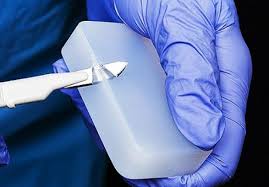
High Temperature Composite Materials Market’s Future Will Bask On The Flourishing State of Transportation And Defense Industries
The high temperature composite materials market will gain leverage from rising disposable income worldwide resulting in a high vehicular population. With a growing number of people having a better income at their disposal, the number of vehicles on the road has increased remarkably. Approximately 95 million vehicles both commercial and passenger were sold in 2018. High temperature composite materials are used in vehicles for their agility and lightweight nature. They’re also environment-friendly and exhibit high performance. The high temperature composite materials market share has been estimated to grow at a CAGR of 7.9% during the forecast period 2019-2025. In 2018, the high temperature composite materials market size reached $4.3 billion. Some of the high temperature composite materials are fiber reinforced polymer, metal matrix composites, advanced composite materials, ceramic matrix composites, and high stretching forces material.
North America To Geographically Lead The High Temperature Composite Materials Market
According to IndustryARC’s research, the high temperature composite materials market share was dominated by North America. In 2018, the region held a 37.5% share of the total revenue earned by the market globally. North American countries such as the United States of America invests millions of dollars every year in its defense industry. In 2019, the Trump administration estimated American defense budget allocation costs at $750 billion. The actual costs, however, exceeded $1 trillion, thus making this budgetary allocation the highest ever in American history. High temperature composite materials are heavily employed in the defense industry for their use in producing effective warfare. They are also used in the aerospace division of the defense industry thus generating a high demand for the high temperature composite materials market. Additionally, high temperature composite materials market is also generating demand from the space industry. Since the outer space has an incredibly high temperature, composite materials are being increasingly used in the development and production of space crafts.
High Temperature Composite Materials Market: Key Application
On the basis of application, the high temperature composite materials market can be segmented into aerospace, defense, transportation, energy, power, electrical, electronics, and others. Transportation has emerged as the most promising segment of the market owing to the large demand for high temperature composite materials in vehicles. This application segment has been evaluated to grow with a CAGR of 7.5% during the forecast period 2019-2025.
High Temperature Composite Materials Market: Competitive Landscape
The companies which hold majority shares in the high temperature composite materials market share are Kyocera Chemical Corporation, Royal Tencate N.V., Renegade Materials Corporation, Lonza Group, Ube Industries Ltd., 3M Co., General Electric Co., CeramTec GmbH, SGL Carbon SE, Vesuvius PLC, Lancer Systems LP, Ultramet Inc, Starfire Systems Inc.
Talk to one of our sales representative about the full report by providing your details in the link below:
https://www.industryarc.com/support.php?id=500266
Related Reports:
- Composite Materials Market
https://www.industryarc.com/Report/246/composite-materials-market-analysis-report.html
Any other custom requirements can be discussed with our team, drop an e-mail to sales@industryarc.com to discuss more about our consulting services.
To request for a quote, provide your details in the below link:
https://www.industryarc.com/reports/request-quote?id=500266
Media Contact:
Mr. Venkat Reddy
Sales Manager
Email: sales@industryarc.com
Contact Sales: +1-614-588-8538 (Ext-101)
About IndustryARC: IndustryARC is a Research and Consulting Firm that publishes more than 500 reports annually, in various industries such as Agriculture, Automotive, Automation & Instrumentation, Chemicals and Materials, Energy and Power, Electronics, Food and Beverages, Information Technology, and Life sciences and Healthcare.
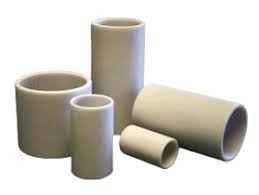
Cellulose ether & its derivatives market is driven by the penetration of cellulose gum products in pharmaceutical and construction industries
The most abundant natural water-soluble polymer widespread application in pharmaceuticals, paints and food applications is providing a large scope for the companies to increase their cellulose ether market share. Additionally, an increase in the consumption of cosmetics and personal care products in Brazil, China, India, Mexico, and South Africa is anticipated to expand the cellulose ether market size. Cellulose ether and its derivatives act as modifiers in personal care products such as soaps, shampoos, and body lotions. Different varieties of cellulose ether such as Methyl, Carboxymethyl, Hydroxyethyl, Hydroxypropyl, and Ethyl are widely used in the construction, cement, textiles, detergents, coatings, paper-making, electronic components, chemical, and petroleum industries. These ethers are majorly used for stabilizing, binding, water retention, film foaming, emulsion, and thickening in the above-mentioned applications. Increase in the cellulose ethers consumption in food applications, especially in bakery products preparation as a thickener for canned fruit pie fillings and in frozen food production, as a stabilizer, crystallization controller and moisture retention in varied beverages along with the processed food formulations is fuelling the cellulose ether market revenue. As a part of food applications, cellulose ether is consumed as a thickener for canned fruit pie fillings and plays a promising role in frozen food and bakery products preparation. In addition to this, it also acts as a stabilizer, crystallization controller and moisture retention in varied beverages along with the processed food formulations. All these factors are increasing the cellulose ether market size.
The tangible demand influx led to a humongous global cellulose ether & its derivatives market size that stood at $5.52 billion in 2018. Furthermore, it is set to grow at a CAGR of 5.5% during the forecast period 2019-2025.
APAC Cellulose Ether & Its Derivatives Marketplace:
APAC has occupied a dominating share of 38% in the global cellulose ether derivatives market, as of 2018.
The growing number of investments in the construction industry coupled with government initiatives to improve infrastructure in India is driving the Indian construction industry growth. In the direction of construction industry growth, India has planned to invest $777.73 billion in infrastructure by 2022 to have sustainable development in the country, which supports India to stand as the third largest construction market, worldwide by 2022. This rapidly changing building and construction industry encourage the improvement in high-performance products. Cellulose ethers are such dry mix materials that are highly adopted by the builders to improve the quality and sustainability of the building and also emphasizing the application of these ethers in the construction industry. For instance, Indian National highway construction has raised by 20% during 2017-18, targeted to cover 50,000 kilometers by 2019. This expansion has increased the usage of cellulose ether in road transport construction.
Continuous growth in demand for personal care, pharmaceutical and cosmetic products coupled with the rise in construction expenditure in China and India is expected to boost the APAC cellulose ether market revenue. Global cellulose ethers & its derivatives market size will witness significant growth, owing to its increasing demand for cellulose ethers in construction as thickeners, binders, and water-retention agents. Increasing China cellulose ether production due to the capacity expansions by cellulose ether manufacturers is contributing to the increment in the APAC cellulose market size.
Pharmaceuticals Industry Application Segment to Experience Expansion in the Upcoming Years:
Pharmaceuticals application of cellulose ether is set to grow at the fastest CAGR of 5.1% among all other applications over the forecast period. Cellulose ethers are one of the cellulose derivatives. These polymers are mostly used in the healthcare product formulations. These compounds play a prominent role in osmotic drug delivery systems, bioadhesives, dosage forms, mucoadhesives, and compression tablets. On the other hand, cellulose ethers are primarily used as thickeners, stabilizers, viscosity agents, compressibility enhancers, and as gelling agents in pharmaceuticals, food, construction, personal care, chemicals, textiles, paper, and adhesives applications.
Methylcellulose and ethylcellulose are broadly used as a bulking agent in treating intestinal illnesses, particularly in diabetic diets, as a binder for tablets, and as ingredients for ointments and lotions. Cellulose gum product usage in a wide variety of health care and personal care formulations which include skincare, oral care, wound care, and hair care is acting as the growth-promoting factor of the cellulose ether derivatives market.
Cellulose Ether & Its Derivatives Market – Key Players
Ashland Global Specialty Chemicals Inc., The Dow Chemical Company, CP Kelco, Shin-Etsu Chemical Co., Ltd., AkzoNobel Performance Additives, Lotte Chemicals, Reliance Cellulose Products Limited, and China RuiTai International Holdings Co., Ltd. are operating as major players in the global cellulose ether market.
Talk to one of our sales representative about the full report by providing your details in the link below:
https://www.industryarc.com/support.php?id=500273
Related Report:
- Sodium Carboxymethyl Cellulose Market
https://www.industryarc.com/Report/16252/sodium-carboxymethyl-cellulose-market.html
- Cellulose Ethers Market
https://www.industryarc.com/Report/11703/cellulose-ethers-market.html
Any other custom requirements can be discussed with our team, drop an e-mail to sales@industryarc.com to discuss more about our consulting services.
To request for a quote, provide your details in the below link:
https://www.industryarc.com/reports/request-quote?id=500273
Media Contact:
Mr. Venkat Reddy
Sales Manager
Email: sales@industryarc.com
Contact Sales: +1-614-588-8538 (Ext-101)
About IndustryARC: IndustryARC is a Research and Consulting Firm that publishes more than 500 reports annually, in various industries such as Agriculture, Automotive, Automation & Instrumentation, Chemicals and Materials, Energy and Power, Electronics, Food and Beverages, Information Technology, and Life sciences and Healthcare.

Wood Preservative Market Experiencing Positive Impulse with the Growing Prevalence of Wood Applications
The incessantly growing construction activities across the world along with the rising demand for a myriad of wood applications such as furniture, decking, timber treatment, railroad ties, and shipbuilding are the prime factors for the growth of the wood preservative market. In the aforementioned applications, wood preservatives are widely used for protecting the wood from decaying, decomposition, and other natural hazards like fire. Wood preservatives such as copper wood preservatives, green wood preservatives, exterior wood preservatives, and synthetic wood preservatives enhance the lifespan of the wood by restricting the attacks from insects, bacteria, and fungus. Among various applications, wood preservatives have gained significant importance in the railway industry owing to its wide application in the wood-based structures used in railroads. The high safety concerns in the railway sector are continually demanding improvement, maintenance, and repair activities across the railroads, which, in turn, is presumed to complement the wood preservative market. Moreover, as a great deal of wood preservatives are used on each railway tie, the perpetual growth in the global railway industry is considered to have a positive impact on the wood preservative market. For instance, in India, the railway infrastructure investments are anticipated to increase from $59 billion in 2013-17 to $124 billion in 2018-22. This is an attenuated representation of the growth of railway construction activities across the world.
As of 2018, the wood preservative market was valued at $1.51 billion. Moreover, the demand for the wood preservatives is poised to propel at a CAGR of 5.2% during the forecast period 2019-2025.
North America Domineering the Global Wood Preservative Market—
Geographically, North America is considered to be the most lucrative wood preservative marketplace during the forecast period and was responsible for 35% of the total revenues generated in 2018. On the back of rapid technological advancements, there is an increase in consumer awareness towards environment protection, which further propelled the demand for biodegradable coatings and preservatives in this area. Additionally, the upsurge in single-family house structure in the developed countries such as the USA, Canada, and Mexico is providing a prime impetus for the growth of the residential constructions in North America. Consequently, it is increasing the demand for wood for applications such as building material, furniture, and interior decoration. This, in turn, is driving the regional wood preservative market. Moreover, the market players in this region are adopting technological advancements and strategic initiatives, which is further aiding the market growth. For instance, in recent years, Troy Corporation in the U.S., developed and wet-state wood preservatives, Mergal GLT25 & GLT50, that offer wide spectrum protection from bacteria and fungi in aqueous systems. These factors have rendered North America with the maximum market share.
Rising Residential Construction Activities Abetting the Wood Preservative Market Growth—
On the basis of application, the residential segment is anticipated to prosper at the highest growth rate during the forecast period. The growth of this segment is attributed to the burgeoning residential construction activities across the world. For instance, in the U.S., the private residences authorized by building permits in August 2019 were estimated to be around 1,419,000, an increase of 12% from August 2018. Wood plays a prominent role in residential construction and finds its use in structural, decking, fencing, landscaping, decoration, and furniture applications. Wherein, the wood preservatives are used in conjunction with the wooden structures to increase the lifespan of the wood. Therefore, the key application segment is anticipated to propel at a CAGR of 4.9% through to 2025.
Major Wood Preservative Market Companies’ Strategies—
Key companies that are striving to gain significant footprint in the wood preservative market are BASF Wolman GmbH, Lonza Group, LANXESS, KMG Chemicals Inc., Troy Corporation, Viance, LLC, Koppers Inc., Remmers Ltd., Huntsman Corporation, Nisus Corporation, Rio Tinto Group, Stella-Jones Incorporated, and Wykamol Group Ltd. These companies are continuously adopting intelligent business strategies such as new product innovations, mergers, acquisitions, partnerships, and collaborations, to strengthen their position in the global market.
Talk to one of our sales representative about the full report by providing your details in the link below:
https://www.industryarc.com/support.php?id= 500271
Related Reports:
- Wood Coatings Market
https://www.industryarc.com/Report/11720/wood-coatings-market.html
- Wood Coating Additives Market
https://industryarc.com/Report/6348/Wood-Coatings-Additives-Market-Research-Report.html
Any other custom requirements can be discussed with our team, drop an e-mail to sales@industryarc.com to discuss more about our consulting services.
To request for a quote, provide your details in the below link:
https://www.industryarc.com/reports/request-quote?id=500271
Media Contact:
Mr. Venkat Reddy
Sales Manager
Email: sales@industryarc.com
Contact Sales: +1-614-588-8538 (Ext-101)
About IndustryARC: IndustryARC is a Research and Consulting Firm that publishes more than 500 reports annually, in various industries such as Agriculture, Automotive, Automation & Instrumentation, Chemicals and Materials, Energy and Power, Electronics, Food and Beverages, Information Technology, and Life sciences and Healthcare.
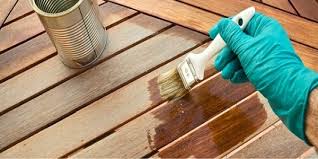
Aliphatic Hydrocarbon Solvents & Thinners Market Experiencing Lucrative Opportunities in the Paints & Coatings Industry
The contemporary demand for paints and coatings from the construction sector is leading to a subsequent surge in the requirement of solvents and thinners which is supporting the aliphatic hydrocarbon solvents & thinners market worldwide. Furthermore, the discernible upsurge in the rubber industry is also leading to a swell in the aliphatic hydrocarbon solvents & thinners market size, especially due to the augmented demand for mineral spirits, petroleum naphtha, petroleum distillate, cyclohexane, octane, hexanes, heptanes, and pentane or isopentane nonane. Some of the well-known aliphatic hydrocarbons or aliphatic compounds are aliphatic mineral spirits and aliphatic naphtha solvent.
It is interesting to note that the trade of petroleum oils, aromatic hydrocarbons, and other chemicals such as naphtha and other solvents increased by 25% as compared to 2017 and attained $771 billion mark in 2018. This is much attributable to the demand for thinners from the paints and coatings market. Evidently, the demand influx led to lucrative aliphatic hydrocarbon solvents & thinners market size of $4.35 billion in 2018, and it is further going to increase at a steady CAGR of 2.5% during the forecast period of 2019-2025.
Paints & Coatings Application Segment of the Aliphatic Hydrocarbon Solvents & Thinners Market to Increase at a CAGR of 2.7% through to 2025 –
Invariably across the world, the most lucrative application for the aliphatic hydrocarbon solvents & thinners market players is found to be the paints & coatings market. This is because of the foreseeable growth in the demand for paints in the automotive, real estate, and the industrial construction sectors. The infrastructure insurgence across the globe to fulfill the requirements mentioned in the sustainable development goals (SDGs) of the United Nations (UN) is further going to augment the demand for paints and coatings in the infrastructure sector, and there will be a subsequent impact on the aliphatic hydrocarbon solvents and thinners market size.
While 2018 witnessed an enormous demand worldwide, APAC held the maximum aliphatic hydrocarbon solvents & thinners market share of 39% in 2018. It is predominantly attributable to the abundance of paint manufacturers in China, India, and other APAC countries.
The opportunities are also evident in the fact that in 2018, APAC had the largest paints and coatings market share of 44%.
Furthermore, Nippon Paint Holdings Co., Ltd had expanded its manufacturing capacity in China during FY-2016, and this has been making an impact on the aliphatic hydrocarbon solvents and thinners market demand in the country. In the upcoming years, China and India are substantially going to drive the global construction industry which is going to attain $8 trillion market by 2030. This will augment the demand for paints and coatings, and there will be a subsequent increase in the aliphatic hydrocarbon thinners market size.
Aliphatic Hydrocarbon Solvents & Thinners Market Companies –
The companies with the maximum aliphatic hydrocarbon solvents & thinners market share are SK Global Chemical Co., Ltd., Honeywell International Inc., ExxonMobil Chemical, Inc. Royal Dutch Shell PLC, Calumet Specialty Products Partners, L.P., Gotham Industries, Recochem Inc., Gulf Chemicals and Industrial Oils Co., W.M. Barr, HCS Group, NOCO Energy Corporation, Ganga Rasayanie (P) Ltd., Hunt Refining Company, Gadiv Petrochemical Industries Ltd., BASF SE, and LyondellBasell Industries Holdings BV.
Talk to one of our sales representative about the full report by providing your details in the link below:
https://www.industryarc.com/support.php?id=500269
Related Reports:
- Solvent Market
https://www.industryarc.com/Report/15267/solvents-market.html
- Ink Solvent Market
https://www.industryarc.com/Report/16436/ink-solvent-market.html
Any other custom requirements can be discussed with our team, drop an e-mail to sales@industryarc.com to discuss more about our consulting services.
To request for a quote, provide your details in the below link:
https://www.industryarc.com/reports/request-quote?id=500269
Media Contact:
Mr. Venkat Reddy
Sales Manager
Email: sales@industryarc.com
Contact Sales: +1-614-588-8538 (Ext-101)
About IndustryARC: IndustryARC is a Research and Consulting Firm that publishes more than 500 reports annually, in various industries such as Agriculture, Automotive, Automation & Instrumentation, Chemicals and Materials, Energy and Power, Electronics, Food and Beverages, Information Technology, and Life sciences and Healthcare.
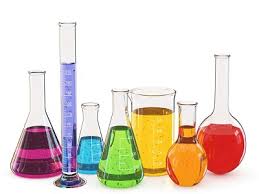
Growing Trend of 3D Printing in the Construction Sector Burgeoning the Demands for Waterproof Tapes
The global waterproof tapes market size was $4.42 billion in 2018 and the opportunities in the market are projected to grow at a CAGR of 6.1% during the forecast period 2019 to 2025. The market is estimated to witness traction in the near future owing to the growing demands for waterproof tapes such as waterproof duct tape, water resistant tape, waterproof medical tape, waterproof sealing tape, clear waterproof tape, and waterproof double sided tape in the automotive, healthcare, electrical & electronics, construction, and packaging industry verticals. These tapes exhibit water and air resistance along with excellent abrasive resistance, moisture-proof, and adhesion, therefore they are considered an optimal solution for taping applications.
Application Analysis in the Waterproof Tapes Market
The construction sector was observed as the most lucrative end-user vertical in the global waterproof tapes market. The boosted construction activities all over the world are breeding a substantial demand for distinct raw materials. One of the trending raw materials in the construction industry is waterproof tapes. These tapes are thin films that can be applied to concrete, steel, walls, and other surfaces to increase the robustness, durability, water resistance, and conductivity of the surface. The application of waterproof tapes in the construction industry is expected to grow at a CAGR of 6.5% during the forecast period. Additionally, the rapidly increasing population is generating demands for residential and commercial infrastructures which is further inclining the demands in the global waterproof tapes market.
APAC Portraying the Highest Demands
The Asia-Pacific region was observed as the most productive region in the waterproof tape market and the region was held accountable for 37% of the total waterproof tape marketplace. This heavy market share is reflected due to the tremendously growing automotive and construction sector. Additionally, the emerging market for the electric vehicles has also boosted the demands for waterproof tapes in the APAC region. Also, the growing trend of 3D printing in the construction sector is also burgeoning the demands for waterproof tapes. One other factor positively influencing the market size is the increasing application of these tapes in the healthcare sector.
Waterproof Tapes Market Trends
- Conducting Tapes: These tapes are known for conducting electrons that ultimately embraces the flow of electricity. The popularity of these tapes is growing rapidly among the education, construction, and energy sectors owing to the features they offer such as versatility, conductivity, and durability along with robust adhesion.
- Eco-friendly Tapes:Plastic is the main raw material used in the production of tapes, and the growing awareness towards the harmful properties of plastic could hinder the development of plastic growth. To tackle this situation, some of the niche and key companies are investing in the research and development activities for tape production. They are looking forward to possibilities to develop environment-friendly tapes. With such proactive processes in the tape industry, the traction in the waterproof tapes market is subjected to continue growing.
Waterproof Tapes Market Competitive Landscape
The companies influencing the waterproof tapes market are Avery Dennison Corporation, 3M Company, Henkel AG & Company, Nitto Denko Corporation, Scapa Group plc, Beiersdorf AG, I3 BioMedical, Medline Industries Inc., and Tesa.
Talk to one of our sales representative about the full report by providing your details in the link below:
https://www.industryarc.com/support.php?id=500268
Related Reports:
- Seal-Adhesive Tape Market
https://www.industryarc.com/Research/Seal-Adhesive-Tape-Market-Research-501675
- Anti-Corrosion Tape Market
https://www.industryarc.com/Report/15955/anti-corrosion-tape-market.html
Any other custom requirements can be discussed with our team, drop an e-mail to sales@industryarc.com to discuss more about our consulting services.
To request for a quote, provide your details in the below link:
https://www.industryarc.com/reports/request-quote?id=500268
Media Contact:
Mr. Venkat Reddy
Sales Manager
Email: sales@industryarc.com
Contact Sales: +1-614-588-8538 (Ext-101)
About IndustryARC: IndustryARC is a Research and Consulting Firm that publishes more than 500 reports annually, in various industries such as Agriculture, Automotive, Automation & Instrumentation, Chemicals and Materials, Energy and Power, Electronics, Food and Beverages, Information Technology, and Life sciences and Healthcare.
Metal Finishing Chemicals Market Players Witnessing Profitable Prospects in Automotive Industry
The metal industry witnessed trade worth $436.6 billion in 2018 with year on year growth of 14%, which evinces the booming demand for metals across various end-user industries. It is leading to an expansion in the metal finishing chemicals market size that was evaluated at $9.70 billion in 2018, and it is projected to expand at a CAGR of 4.5% during the forecast period 2019-2025.
Cleaning chemicals such as nitric acid, chromic acid, sulfuric acid, and others are experiencing high demand from the metal industry for metal finishing process or surface finishing and electropolishing too. Additionally, chemicals for abrasive blasting are necessary for the paint industry, which further catapults the metal finishing chemicals market.
The most prominent reason for the flourishing metal finishing chemicals market is the rise of demand from the automotive industries which is creating lucrative business opportunities for the companies.
Automotive Industry to Offer Opportunities to the Metal Finishing Chemicals Market Players at the Fastest CAGR of 5% through to 2025 –
The automotive industry is going through a transition state; however, the demand for metals for automobile vehicles manufacturing remains the same. In 2018, 95.6 vehicles were manufactured across the globe which created a demand influx for metals and metal finishing chemicals.
With the advent of electric vehicles and autonomous cars, the production in the automotive industry is set to rise significantly. Furthermore, increasing disposable income and higher purchasing power has been enabling the end-users to afford expensive automobile vehicles, which is also increasing the automotive industry’s valuation, and the associated markets such as the metal finishing chemicals market are benefitted by the same.
North America with the Greatest Metal Finishing Chemicals Market Share of 35% in the Global Revenues –
The prospects in the North America metal finishing chemicals market is attributable to the rise of the automotive industry in the region. The US and Mexico boast of one of the largest automotive industries with 11314705 and 4100525 number of vehicles manufactured in 2018. This created a lot of opportunities for the metal finishing chemicals market players.
The future holds some profitable prospects for the North America metal finishing chemicals market players as the manufacturing of autonomous vehicles and electric vehicles is going to increase significantly.
Top Metal Finishing Chemicals Market Players –
The major metal finishing chemicals market companies that are expanding geographically and striving to capitalize on the increasing demand for the chemicals are Atotech Deutschland GmbH, Advanced Chemical Company, Chemetall GmbH, Elementis plc, DOW Chemical Company, McGean Rocho US, Coral Chemical Company, Platform Specialty Products Corporation, Quaker Chemical Corporation, Houghton International Inc., NOF Corporation, Henkel AG & Company, KGaA; RASCHIG GmbH, and A Brite Company Inc.
Talk to one of our sales representative about the full report by providing your details in the link below:
https://www.industryarc.com/support.php?id=500117
Related Reports:
- Global Composite Metal Finishing Market
https://www.industryarc.com/Research/Global-Composite-Metal-Finishing-Market-Research-502994
- Electroplating Market
https://www.industryarc.com/Report/15894/electroplating-market.html
Any other custom requirements can be discussed with our team, drop an e-mail to sales@industryarc.com to discuss more about our consulting services.
To request for a quote, provide your details in the below link:
https://www.industryarc.com/reports/request-quote?id=500117
Media Contact:
Mr. Venkat Reddy
Sales Manager
Email: sales@industryarc.com
Contact Sales: +1-614-588-8538 (Ext-101)
About IndustryARC: IndustryARC is a Research and Consulting Firm that publishes more than 500 reports annually, in various industries such as Agriculture, Automotive, Automation & Instrumentation, Chemicals and Materials, Energy and Power, Electronics, Food and Beverages, Information Technology, and Life sciences and Healthcare.
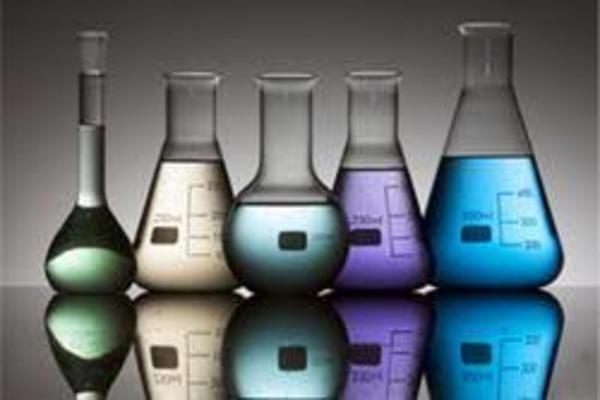
Increasing Membrane Separation Technology Market Size to Create Capacity Expansion Opportunities for Companies
The issue of the water quality deterioration which is perceivably leading to deprivation of potable water is creating a consistent demand for water treatment. Furthermore, stringent government regulations are applicable to wastewater that comes out of production plants belonging to various industries. This is creating a requirement for toxic chemical water treatment in pharmaceuticals, oil & gas, and other industries, which in turn, is leading to an expansion in the membrane separation technology market size.
The augmented demand is inspiring companies to expand production capacities in order to increase their membrane separation technology market share. For instance, in October 2017, Sumitomo Electric Industries, Ltd. expanded and reinforced the production capacity of water treatment membrane modules at its subsidiary Zhongshan Sumiden Hybrid Products Co., Ltd. (ZSH).
As of 2018, the membrane separation technology market size was evaluated at $21.82 billion, and it is projected to expand at a profitable CAGR of 7.5% during the forecast period 2019-2025. Owing to the increasing opportunities, more companies will expand their capacities in order to acquire maximum membrane separation technology market share.
Water & Wastewater Treatment Application Segment of the Membrane Separation Technology Market to Expand at a CAGR of 7.8% through to 2025:
Invariably, the industries offer maximum opportunities to the membrane separation technology market players. The contemporary boom in the pharmaceutical and oil & gas is the most effective factor driving membrane separation technology market revenue sources, because the operational units require permeable membrane, reverse osmosis membrane, and ultrafiltration membrane for water and wastewater treatment. With the impending industrial boom across the world which is evident in the capacity expansion by a myriad of companies in various industry verticals, the membrane separation technology market is poised to gain exuded momentum in the future.
The emphasis on potable water and wastewater treatment in European countries will create lucrative opportunities for the membrane separation technology market companies in the region. In 2018, Europe had the maximum membrane separation technology market share with 33% in the revenues. This is because of the fact that companies have realized the opportunity in the region and have been expanding their businesses in European countries. For instance, in 2016, Evonik Industries AG broke ground for expansion of its membrane production in Schorfling (Austria).
The upcoming years will also witness a membrane separation technology market boom in APAC, and the region is already witnessing expansion projects. For instance, Toray Industries, Inc. is poised to double its water treatment membranes production capacity in China. Similarly, other players will venture into the growing APAC membrane separation technology marketplace in order to increase their revenues during the forecast period.
Top 10 Membrane Separation Technology Market Companies:
The companies with the maximum membrane separation technology market share are The Dow Chemical Company, The 3M Company, GE Water & Process Technologies, Toray Industries, Merck Millipore, Asahi Kasei Corporation, Hydranautics, Danaher Corporation, Pentair plc, and Koch Membrane Systems Inc.
Talk to one of our sales representative about the full report by providing your details in the link below:
https://www.industryarc.com/support.php?id=500115
Related Reports:
- RO and UF Membranes Market
https://www.industryarc.com/Report/1288/RO-and-UF-Membranes-Market-report.html
- Pharmaceutical Membrane Filtration Market
https://www.industryarc.com/Research/Pharmaceutical-Membrane-Filtration-Market-Research-505655
Any other custom requirements can be discussed with our team, drop an e-mail to sales@industryarc.com to discuss more about our consulting services.
To request for a quote, provide your details in the below link:
https://www.industryarc.com/reports/request-quote?id=500115
Media Contact:
Mr. Venkat Reddy
Sales Manager
Email: sales@industryarc.com
Contact Sales: +1-614-588-8538 (Ext-101)
About IndustryARC: IndustryARC is a Research and Consulting Firm that publishes more than 500 reports annually, in various industries such as Agriculture, Automotive, Automation & Instrumentation, Chemicals and Materials, Energy and Power, Electronics, Food and Beverages, Information Technology, and Life sciences and Healthcare.
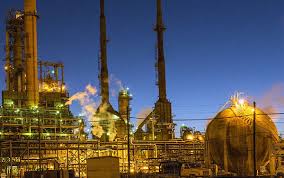
Dependency of the Global Transportation Sector on Fossil Fuels Powered Vehicles Ddriving the Growth of Automotive Catalyst Market
The average carbon discharge by a newly manufactured car in 2017 was recorded to be 118.5 grams of CO2 per km. These figures may not be alarming unless the count is multiplied by nearly 95 million motor vehicles manufactured in 2018. The global automotive production is witnessing escalation year on year and agencies such as Environmental Protection Agency and European Commission are adding emission control enforcements to meet the Sustainable Development Goals. As a consequence, the global automotive catalyst market size is gaining profound traction in terms of global demand. Moreover, some developed economies such as Europe have also introduced Real Driving Emission test measures and on-road testing practices. This is further strictly monitoring vehicles emissions and eventually augmenting the application of automotive catalyst by OEMs in automotive emission systems. Platinum group metals (PGMs) such as rhodium, platinum, and palladium are generally employed as automotive catalyst. In between 2017 – 2018 the global export value of these metals observed a phenomenal growth rate of 19%. Hence, a prosperous trade of raw materials is also creating opportunities for the automotive catalyst market companies. The global automotive sector is diversifying in terms of the range of powertrains including gasoline and diesel engines, natural gas, and alternative fuels. This diversification is creating additional automotive catalyst market demand as the market players have an extensive array of potential market to leverage.
The global automotive catalyst market size was evaluated to be $23 billion in 2018. And as the market production is rightfully serving the demand for a resolution to regulate real driving emissions and deliver cost-effective regulatory compliant solutions, it is estimated to be progressing at a CAGR of 4.5% during the forecast period of 2019 – 2025. Some of the most commonly employed catalyst technology are diesel oxidation catalyst, selective catalytic reduction, diesel particulate filter and gasoline particulate filter. Since fossil fuels in the transportation sector is the major contributor of the carbon footprints, majority of the market demand is witnessed from the gasoline and diesel powered automotive OEMs. In 2018 out of 95 million motor vehicles manufactured, global electric car fleet just accounted for 5 million units. Hence the dependency of the global transportation sector on fossil fuels powered vehicles is major automotive catalyst market growth driver.
China with 27.8 million motor vehicle production in 2018 leads the automotive catalyst market:
After an acute analysis of the regional automotive catalyst market, APAC is reckoned to be the most lucrative marketplace. This region with robust attendance of automotive OEMs in India and China, held 53% of the global automotive catalyst market demand share in 2018. Similarly, by vehicle types light duty vehicles is estimated to be the fastest growing application segment. It is to be noted that out of 95.6 million motor vehicles manufactured in 2018, 70.4 million were cars. This fact strongly evinces the dominance of light duty vehicles in the global automotive catalyst market share.
Some facts in support of the APAC’ dominance–
- 30% of small cars sold globally are those manufactured in India. China alone manufactured 27.8 million motor vehicles in 2018 that is approximately 25% of the global production. So nearly 55% of the global light duty vehicles are manufactured in India.
- 5 of the globally top 10 car manufacturing companies are headquartered in APAC. Toyota (Japan) is at 1st, Honda (Japan) at 6th, SAIC Motor (China) at 7th, Nissan (Japan) at 8thand Dongfeng (China) at 10th global ranking.
- APAC countries automotive sector witnessed a tremendous growth rate during 2017 - 2018, with India (+7.98%), Indonesia (+10.31%), and Malaysia (+12.18%).
Automotive Catalyst Market Companies:
Innovation is paramount to survive in this marketplace as the end users only bet on the most efficient technology to restrict emissions. So the automotive catalyst manufacturing companies are constantly innovating their line of products. For instance, BASF SE has launched the latest component FWC™ (Four-Way Conversion) catalyst. As the potential customer base is already exploited by catalyst makers with the ‘three-way’ catalyst, this four-way conversion catalyst is giving BASF a competitive edge as it removes Particulate Matter (PM), along with CO, HC and NOx from the most commonly applied gasoline-engine exhaust.
Some of the other companies with majority of the global automotive catalyst market shares are Clariant AG, BASF SE, Klarius Products Ltd., Johnson Matthey, Ecocat India Pvt. Ltd., Umicore N.V.., Tenneco Inc., Eberspcher Group, CDTi Advanced Materials, Inc., and Cummins Inc.
Talk to one of our sales representative about the full report by providing your details in the link below:
https://www.industryarc.com/support.php?id=500008
Related Reports:
- Polyolefin Catalyst Market
https://www.industryarc.com/Research/Polyolefin-Catalyst-Market-Research-502941
B Stationary Emission Control Catalyst Market
https://www.industryarc.com/Research/Stationary-Emission-Control-Catalyst-Market-Research-502901
Any other custom requirements can be discussed with our team, drop an e-mail to sales@industryarc.com to discuss more about our consulting services.
To request for a quote, provide your details in the below link:
https://www.industryarc.com/reports/request-quote?id=500008
Media Contact:
Mr. Venkat Reddy
Sales Manager
Email 1: sales@industryarc.com
Contact Sales: +1-614-588-8538 (Ext-101)
About IndustryARC: IndustryARC is a Research and Consulting Firm that publishes more than 500 reports annually, in various industries such as Agriculture, Automotive, Automation & Instrumentation, Chemicals and Materials, Energy and Power, Electronics, Food and Beverages, Information Technology, and Life sciences and Healthcare.
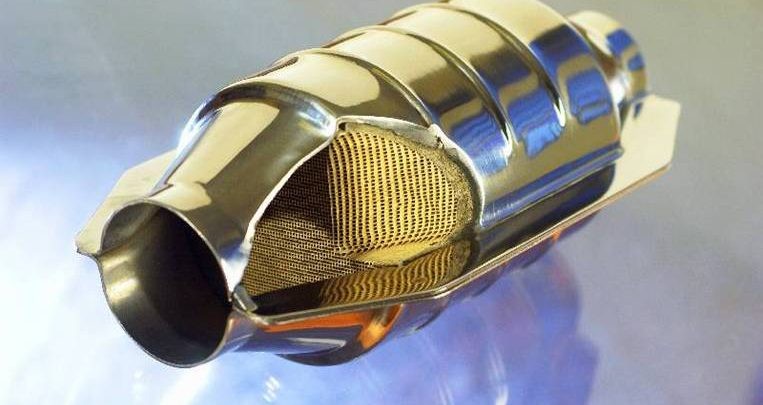
Anti-Slip Additives Market Experiencing Opportunities in Growing Construction Industry
The contemporary upsurge in the construction activities across the globe due to the rapid urbanization has been one of the most effective reasons for the growth imparted in a gamut of associated markets. In the wake of exuded construction activities, paints & coatings market is also experiencing a definite surge in demand, which is significantly creating opportunities for the players striving to increase their anti-slip additives market share. The recent years have witnessed an increase in the anti-slip additives market size which was evaluated at $355 million as of 2018, and it is poised to increase at a CAGR of 5% during the forecast period 2019-2025.
With the rising population, the world is in need for more infrastructure to fulfill the housing requirement of the future populace. This is going to enhance opportunities for the anti-slip additives market players further.
Some other applications on which the anti-slip additives market players will thrive are its requirement in concrete sealers, construction flooring, and marine decks. Anti-slip mat and polymer beads are two prominent types of anti-slip additives used in different industries.
In 2018, the parent industry of the anti-slip additives market experienced trade of around $14 billion with year on year growth of 10%. This evinces the increasing demand of the product which also translates to the regions that have contributed in the expansion of the anti-slip additives market size.
APAC with Maximum Anti-Slip Additives Market Share of 47% in 2018:
The increasing construction activities in China and India are the major reasons for the growth of the APAC anti-slip additives market size.
China’s construction industry is growing rapidly since 1978; its valuation was $816.6 billion in 2017, and the industry saw further growth in 2018 which created a myriad of prospects to prosper for anti-slip additives market players in China.
Similarly, India is poised to see 100 smart cities by the end of 2020. Now, these cities will have infrastructure with anti-slip additives flooring, and this will further drive the market in the country.
The Future for the Anti-Slip Additives Market Players Worldwide:
With the global construction industry poised to attain $8 trillion by 2030, the anti-slip additives market players will experience lucrative opportunities in the same at a CAGR of 5.6% through to 2025.
Top 10 Anti-Slip Additives Market Companies:
The companies with the maximum anti-slip additives market share are BYK Chemie GmbH, PPG Industries, Inc., Hempel A/S, Rust-Oleum Corporation, Vexcon Chemicals, Inc., Saicos Colour GmbH, Exterior Performance Coating, Inc., Associated Chemicals, Axalta Coatings Limited, and Coo-Var.
Talk to one of our sales representative about the full report by providing your details in the link below:
https://www.industryarc.com/support.php?id=500007
Related Reports:
- Slip Additives Market
https://www.industryarc.com/Research/Slip-Additives-Market-Research-500069
- Coating Additives Market
https://www.industryarc.com/Report/11678/coating-additives-market.html
Any other custom requirements can be discussed with our team, drop an e-mail to sales@industryarc.com to discuss more about our consulting services.
To request for a quote, provide your details in the below link:
https://www.industryarc.com/reports/request-quote?id=500007
Media Contact:
Mr. Venkat Reddy
Sales Manager
Email: sales@industryarc.com
Contact Sales: +1-614-588-8538 (Ext-101)
About IndustryARC: IndustryARC is a Research and Consulting Firm that publishes more than 500 reports annually, in various industries such as Agriculture, Automotive, Automation & Instrumentation, Chemicals and Materials, Energy and Power, Electronics, Food and Beverages, Information Technology, and Life sciences and Healthcare.
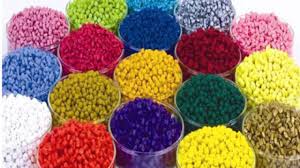
Increasing Agricultural Output and Robust Demand in the Food and Beverage Industry Escalating the Prevalence of Antiblock Additive Market
The consumption of packaged and ready-to-eat food is currently the hottest trend in the food and beverage industry. The increasing demand for packaged food has also curated subsequent demands for the raw materials used for packaging. Antiblock additives are used to tackle a generic problem faced by the manufacturers of coatings and films. These additives create small bumps at the edge of the packing which increases the distance between two layers, thereby, containing the blocking. The bolstered demands for good quality packaging products are generating gamut of opportunities in the global antiblock additives market which already held the market size of $970 million in 2018. The market reflects the potential to grow at a positive CAGR of 6% during the forecast period 2019 to 2025.
Geographical Distribution in the Global Antiblock Additive Market
The highest demands for antiblock additive are witnessed from the APAC region which acquired 48% of the global antiblock additive market. The increasing agricultural output and robust demand in the food and beverage industry is escalating the prevalence of antiblock additive market. Moreover, incrementing packaging requirements in the consumer electronics sector from countries such as India, Japan, and China are burgeoning the APAC antiblock additive market volume. Other than the APAC region, the demands for antiblock additive are also increasing in the North American region owing to the uptick in demands for packaged and processed food.
Application Analysis in the Global Antiblock Additive Market
The food and beverage end-user segment is the major application of the antiblock additive market and the sector is witnessing growth at a CAGR of 5.6% during the forecast period. The food and beverage industry requires a considerate amount of plastics such as polyethylene films and polyethylene terephthalate (PET) for packaging purposes. Application of antiblock additives is necessary for a certain range of food products to prevent them from the outside environment. Some of the most prevalent antiblock additives in the market are oxygen scavengers, diatomaceous earth, and ethylene bisstearamide. Other than the food and beverage industry, the consumer electronics segment is also paving opportunities in the global antiblock additives market.
Antilock Additive Market Competitive Landscape
The companies influencing the antilock additive market are Croda International PLC, Evonik Industries AG, Imerys SA, J.M. Huber Corporation, W.R. Grace & Company, Elementis PLC, Honeywell International Inc., BYK Additives & Instruments, Fine Organics, and Specialty Minerals Inc.
Talk to one of our sales representative about the full report by providing your details in the link below:
https://www.industryarc.com/support.php?id=500100
Related Reports:
- Southeast Asia Propylene Market
https://www.industryarc.com/Report/15016/southeast-asia-propylene-market.html
- Alpha Olefin Market
https://www.industryarc.com/Report/15151/alpha-olefin-market.html
Any other custom requirements can be discussed with our team, drop an e-mail to sales@industryarc.com to discuss more about our consulting services.
To request for a quote, provide your details in the below link:
https://www.industryarc.com/reports/request-quote?id=500100
Media Contact:
Mr. Venkat Reddy
Sales Manager
Email: sales@industryarc.com
Contact Sales: +1-614-588-8538 (Ext-101)
About IndustryARC: IndustryARC is a Research and Consulting Firm that publishes more than 500 reports annually, in various industries such as Agriculture, Automotive, Automation & Instrumentation, Chemicals and Materials, Energy and Power, Electronics, Food and Beverages, Information Technology, and Life sciences and Healthcare.
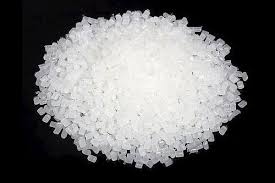
Metallic Stearates Market Scaling Heights with the Growing Demand from Manufacturing Sectors
Metallic stearates have a long history in the applications of manufacturing industries. With the global industrial sector proliferating, the metallic stearates market is rising exponentially. The global manufacturing value-added experienced an increment in the annual growth rate from 1.6% in 2016 to 3.46% in 2017. This increasing growth of the manufacturing sector is uplifting the demand for the metallic stearates market. Furthermore, unique properties exhibited by a manifold range of metallic stearates including zinc stearate, sodium stearate, magnesium stearate, calcium stearate, and aluminum stearate allow their applications in the pharmaceutical, rubber, plastic, construction, and coatings industries. Higher solubility and effective lubricity characteristics displayed by these metallic stearates make them ideal for these end-user industries. On the whole, the physical and chemical properties of metallic stearates are amplifying the metallic stearates market demand in their end-user sectors.
The global metallic stearates market size achieved a value of $3.4 billion in 2018. Furthermore, the industry avenues are increasing at a CAGR of 5.65% during the forecast period 2019-2025.
Growing Construction and Infrastructure Sectors in APAC Driving the Growth of the Metallic Stearates Market
APAC led the global metallic stearates market with a regional share of 39% as of 2018. Rising consumerism and urbanization in APAC is crafting the demand for the end-user industries of metallic stearates such as food, construction, coatings, and infrastructure. China is the world’s largest market for the construction industry and the market is anticipated to rise with an annual growth rate of 5% during 2019-2023. Secondly, by 2025, the Indian construction sector is projected to evolve as the third-largest market growing at an average of 7.1% each year. Subsequently, the construction and infrastructure industries use metallic stearate such as zinc stearate in powdered and precipitated forms as a hydrophobic agent because it inhibits moisture absorption and preserves building materials. On the other hand, owing to its excellent hydrophobicity, aluminum stearates are used as water repellent ingredients in coatings, infrastructure and construction sectors. In addition, the x-ray diffraction technique attained by calcium stearate is highly used in waste treatments and coatings. Thus, with these advantages and the dominance of the end-user industries, the APAC metallic stearates market is scaling greater heights.
Sustainability Initiatives in the Plastic Manufacturing Propelling the Metallic Stearates Market Demand
The global metallic stearate industry is experiencing myriad avenues in the plastic manufacturing segment rising at a CAGR of 5.25% through to 2025. Innovation, sustainability, and standardization are the major drivers in the plastic industry, thriving the demand for the metallic stearates market. Also, rising consumerism is reinforcing the plastic industry demand in various applications such as packaging. Stearates form an important part of the plastic processing owing to their use as lubricants and releasing agents. Metal soaps or metallic stearates are used in the manufacturing of diverse plastics including polypropylene, acrylonitrile butadiene styrene (ABS), polyamide, polyethylene, and fiber-reinforced plastics. With the global plastic industry taking a paradigm shift towards sustainability, the full potential of metallic stearates is cashed out by the manufacturers of the plastic industry in the form of new ecological product innovations. Along with that, global initiatives such as “The New Plastics Economy” and “Plastics 2030” are reducing plastic pollution and paving ways to manufacture a unique combination of durable, light-weight, and intrinsic plastics which further increase the metallic stearates market growth. As a result, growing sustainability demand in the plastic sector is augmenting the growth of the metallic stearates market.
Global Metallic Stearates Market – Competitive Landscape
Companies such as PROMAX Industries ApS, Dover Chemical Corporation, Baerlocher GmbH, FACI SPA, Peter Greven GmbH & Co. KG_x000B, Nimbasia, Marathwada Chemicals, and IRRH SPECIALTY CHEMICALS are leading the global metallic stearates industry. Owing to the immense demand from the end-user industries, the market players are exhibiting rapid progressions in the metallic stearates market.
Talk to one of our sales representative about the full report by providing your details in the link below:
https://www.industryarc.com/support.php?id=500098
Related Reports:
A) Isobutyl Stearate Market
https://industryarc.com/PressRelease/424/Isobutyl-Stearate-Market-Research-Analysis.html
B) Lithium Compounds Market
https://www.industryarc.com/Report/15221/lithium-compounds-market.html
Any other custom requirements can be discussed with our team, drop an e-mail to sales@industryarc.com to discuss more about our consulting services.
To request for a quote, provide your details in the below link:
https://www.industryarc.com/reports/request-quote?id=500098
Media Contact:
Mr. Venkat Reddy
Sales Manager
Email: sales@industryarc.com
Contact Sales: +1-614-588-8538 (Ext-101)
About IndustryARC: IndustryARC is a Research and Consulting Firm that publishes more than 500 reports annually, in various industries such as Agriculture, Automotive, Automation & Instrumentation, Chemicals and Materials, Energy and Power, Electronics, Food and Beverages, Information Technology, and Life sciences and Healthcare.
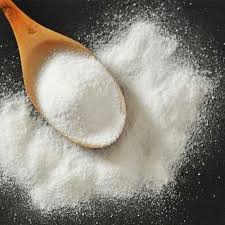
Modacrylic Fiber Market Gaining Revenue Sources Due to Demand for Protective Apparel in Various Industries
In the wake of industrial development for fulfilling the requirement of various goods generated by the much expected rise in population, the associated markets are experiencing a demand upsurge which resonates with the modacrylic fiber market growth. Modacrylic fibers - a form of acrylic fiber and much like polyester staple fiber find applications in a gamut of markets that include hair fiber, upholstery & household, pile, and industrial fabrics.
Hair loss has become a common occurrence in men across the world, which is increasing the demand for hair fiber, and therefore, the modacrylic fiber market is gaining traction from the same.
As of 2018, the modacrylic fiber market size was evaluated at $660.7 million, and it will increase at a CAGR of 3.12% during the forecast period 2019-2025.
Fiber Apparel and Protective Apparel Segment of the Modacrylic Fiber Market to Grow at a CAGR of 2.89% through to 2025:
The protective clothing market witnessed trade worth $11.36 billion in 2018, and the value was increased by 7% as compared to 2017. This evinces the scope for modacrylic fiber market players in the protective apparel segment.
This segment is going to witness an increment during the forthcoming years because of the emphasis on safety in various industries. Moreover, the pharmaceutical, oil & gas, and chemical industries are going to observe growth by 2030 in order to fulfill the sustainable development goals (SDGs) of the United Nations (UN). This is coupled with the fact that safety has become to paramount aspect of industries owing to the threat to incidents and accidents. It will generate demand for protective clothing, which in turn, will lead to an expansion in the modacrylic fiber market size in this segment.
Owing to the abundance of industries in APAC, the modacrylic fiber market experienced rich opportunities in the region. APAC had the maximum modacrylic fiber market share of 56% in 2018.
In the forthcoming years, the pharmaceutical industry will be booming in India as its growth is a prime target of pharma vision 2020. Furthermore, Indian oil & gas production sector is expanding significantly which will create a myriad of opportunities for the protective apparel market, which in turn, will support the modacrylic fiber market players.
Top 10 Modacrylic Fiber Market Companies:
Companies with maximum modacrylic fiber market share that are striving to expand geographically are Kaneka Corporation, Fushun Rayva Fibre Co., Ltd., Formosa Chemicals & Fibre Corporation, Tianjin GT New Material Technology Company Limited, Fushun Huifu Fire Resistant Fibre Company Limited, Zhangjiagang Hengfeng Textile Company Limited, Nantong Xufeng Textile Industrial Company Limited, Shanghai Changjie Textile Company Limited, Jiangsu Blue Peacock Chemical Fibre Co., Ltd., and Zhejiang Wangzhuo Knitting Co., Ltd.
Talk to one of our sales representative about the full report by providing your details in the link below:
https://www.industryarc.com/support.php?id=500095
Related Reports:
- A. Fiber Cement Market
https://www.industryarc.com/Report/209/Global-Fiber-Cement-Industry-Market-Analysis-Report.html
Any other custom requirements can be discussed with our team, drop an e-mail to sales@industryarc.com to discuss more about our consulting services.
To request for a quote, provide your details in the below link:
https://www.industryarc.com/reports/request-quote?id=500095
Media Contact:
Mr. Venkat Reddy
Sales Manager
Email: sales@industryarc.com
Contact Sales: +1-614-588-8538 (Ext-101)
About IndustryARC: IndustryARC is a Research and Consulting Firm that publishes more than 500 reports annually, in various industries such as Agriculture, Automotive, Automation & Instrumentation, Chemicals and Materials, Energy and Power, Electronics, Food and Beverages, Information Technology, and Life sciences and Healthcare.
